Angkor, the ancient city of the Khmer Empire, is home to many stunning temples in Cambodia. Some are grand temples with intricate carvings. Others are jungle temples with trees growing through the ruins. Discover the 10 Best Temples of Angkor in Cambodia!
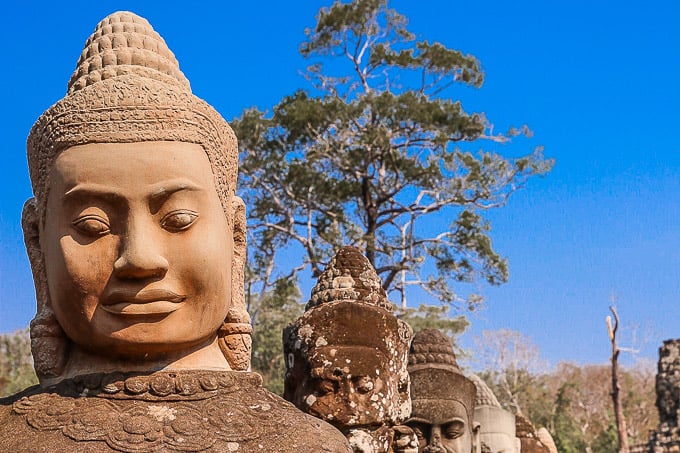
Angkor, Cambodia
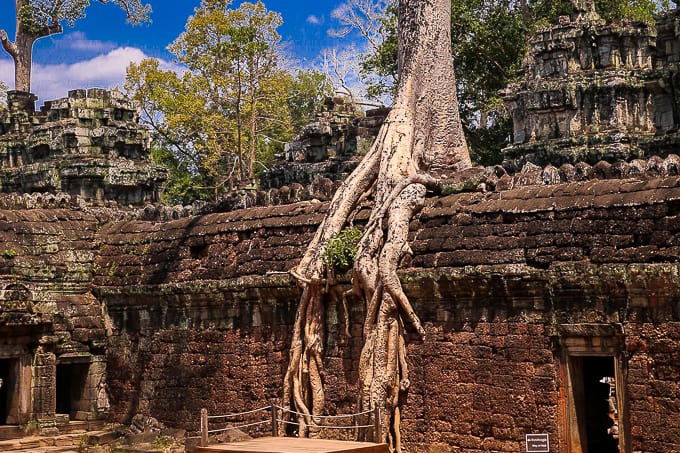
Angkor, Cambodia
The Khmer Empire (the Angkor Empire) existed from the 9th to the 15th centuries and was a Hindu-Buddhist Empire in Southeast Asia. Angkor was the site of the empire’s capital city. Khmer Empire was the predecessor state of modern Cambodia.
The impressive temples of Angkor, such as Angkor Wat, Bayon, Baphoun, and others demonstrate just how prosperous the empire was. The rich heritage of the Khmer Empire is evident in the spectacular architecture of Angkor.
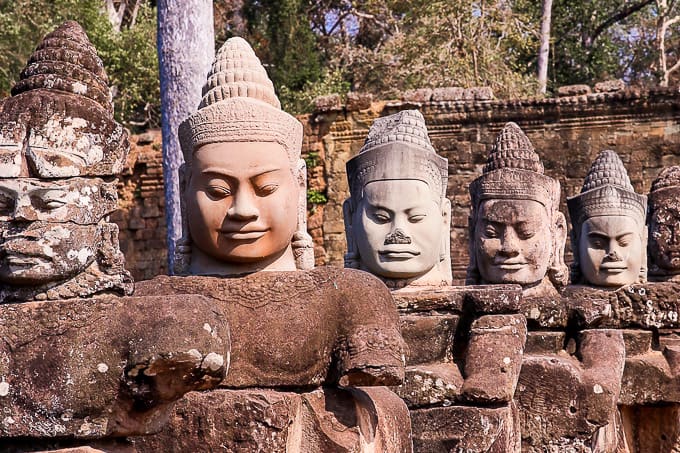
Angkor, Cambodia
Angkor monuments are famous for their grandiose design, intricate carvings, and stone inscriptions. Many of the temples were built using sandstone and laterite as the main building materials.
Some structures at Angkor are known for their serene and smiling faces. Others are famous for elaborate carvings. Some temple walls have reliefs with depictions of daily life during the Khmer Empire, the military marches, and other scenes. Each temple is unique and has its own rich history. Discover the 10 Best Temples at Angkor, Cambodia!
1. Angkor Wat
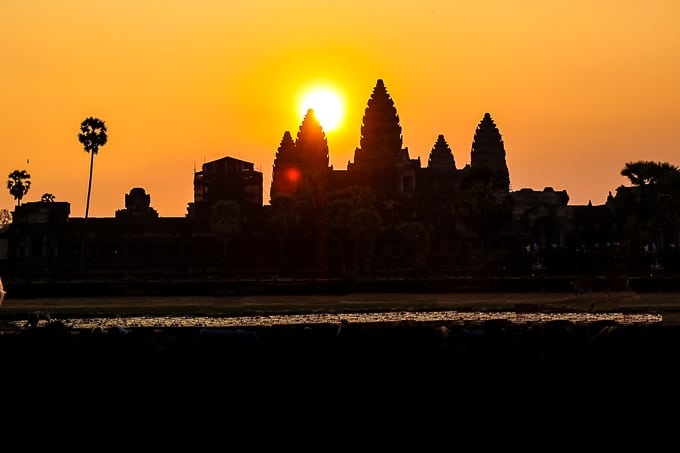
Angkor Wat sunrise
Angkor Wat is a spectacular ancient temple complex in Cambodia. Surrounded by a moat and occupying a site of over 400 acres, Angkor Wat is one of the largest religious monuments in the world.
Angkor Wat was built by the Khmer King Suryavarman II (reigning from 1113 AD to 1150 AD) at the beginning of the 12th century. Initially, Angkor Wat was built as a Hindu temple and was dedicated to the god Vishnu. At the end of the 12th century, Angkor Wat was turned into a Buddhist temple.
The temple was built to represent the Mount Meru, a legendary five-peaked mountain in Hindu mythology.
2. Bayon Temple
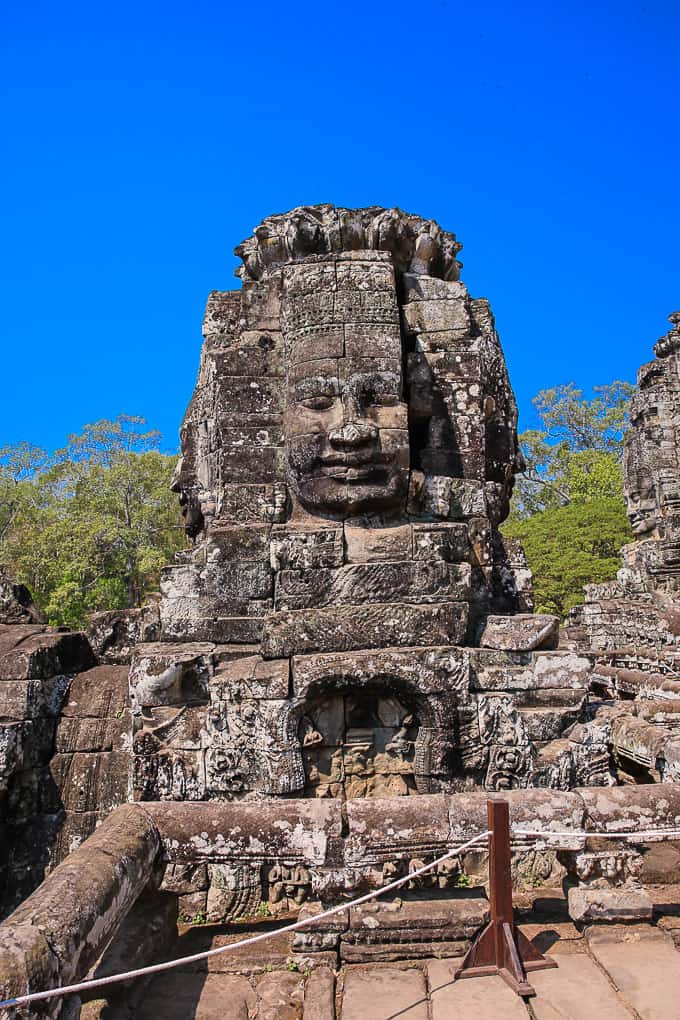
Bayon Temple, Angkor Thom, Cambodia
The Bayon is an ancient temple in the center of Angkor Thom, Cambodia. Numerous smiling faces are depicted on the towers of the Bayon, making this temple distinctively different from the others in the area.
Bayon was built as the state temple of the King Jayavarman VII, a king of the Khmer Empire from 1181 to 1218. He was strongly devoted to Buddhism and built the Bayon as a result of his devotion. It was the last temple built at Angkor.
3. Baphuon
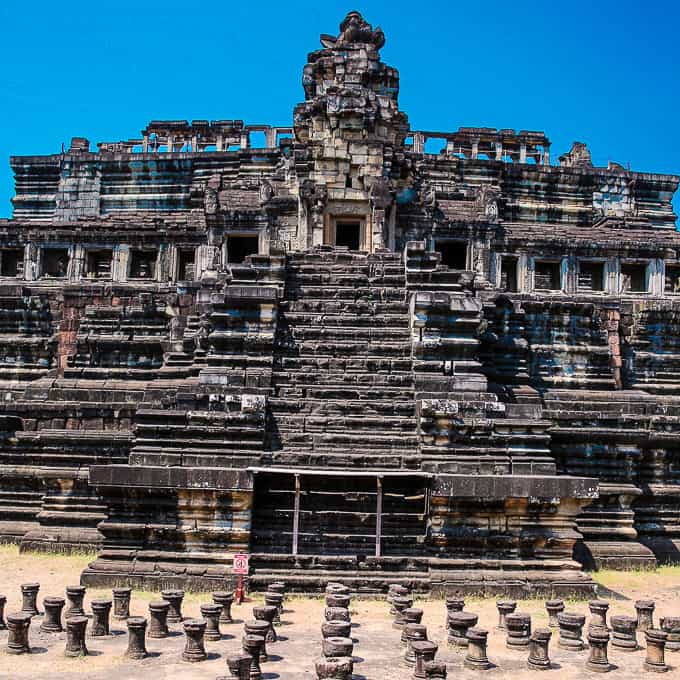
Baphuon temple, Cambodia
The Baphuon is part of Angkor Thom, an ancient city of the Khmer Empire. This impressive 11th-century temple is structured as a three-tiered temple mountain and is famous for its elaborate stone carvings.
It was initially dedicated to the Hindu God Shiva and served as the state temple of Udayadityavarman II, the ruler of the Angkor Kingdom from 1050 to 1066 A.D.
In the 15th century, the Baphuon was transformed into a Buddhist temple.
4. Other temples at Angkor Thom
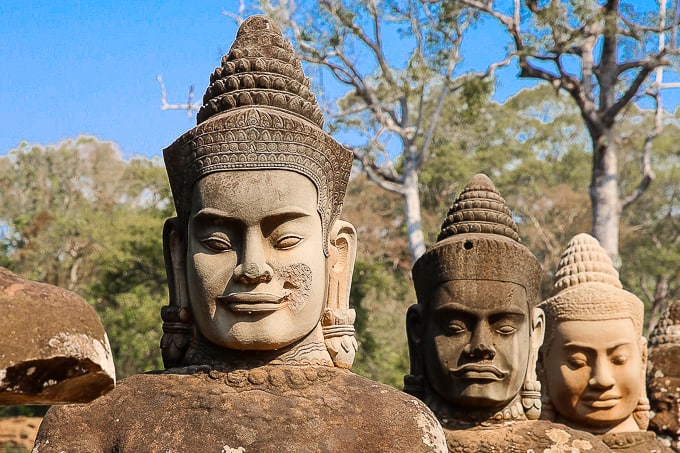
Angkor Thom, Cambodia
Angkor Thom is an ancient walled city and the last capital of the Khmer empire. Angkor Thom was established by King Jayavarman VII (a king of the Khmer Empire from 1181 to 1218). The walled city is surrounded by a moat and is laid out as a square. Angkor Thom covers the area of about 9 square kilometers.
Angkor Thom is famous for its many impressive monuments, including the Bayon, the Baphuon, the Terrace of the Elephants, and the spectacular Angkor Thom South Gate. Other notable structures within Angkor Thom include the Terrace of the Leper King, Phimeanakas (remains of a 10th-century Hindu temple), Preah Pithu, Preah Palilay, and others.
Here are other temples worth exploring at Angkor Thom besides the Bayon and the Baphoun:
- Mangalartha (or East Prasat Top) is a small Hindu temple.
- Phimeanakas is a Hindu temple, built in the 10th century, during the reign of Rajendravarman (the king of the Khmer Empire from 944 to 968). It was completed by Suryavarman I (the king of the Khmer Empire from 1006 to 1050).
- Preah Palilay is a small Buddhist temple in the wooded area about 400 meters north-west of Phimeanakas in Angkor Thom.
5. Banteay Srei – Lady Tempe – Citadel of the Women
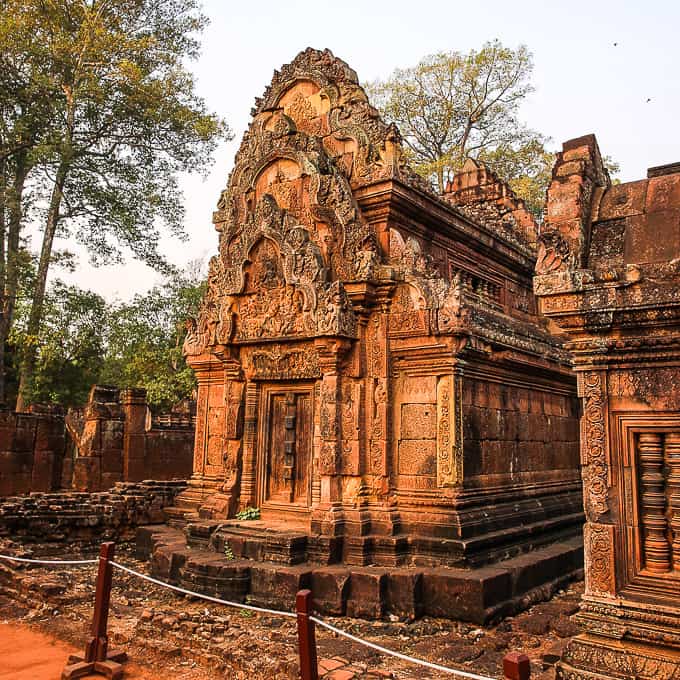
Banteay Srei (Lady Temple), Cambodia
Banteay Srei is one of the most elaborate temples in Cambodia. Dedicated to Hindu god Shiva, this 10th-century Cambodian temple is famous for its beautiful pinkish sandstone and intricate three-dimensional wall carvings. Banteay Srei is one of the smallest sites at Angkor.
Banteay Srei was built in 967. The temple was built using the red sandstone that gives the temple its characteristic pinkish hue. That’s why Banteay Srei is sometimes called “The Pink Temple”.
The temple is located about 29 km (18 miles) northeast of Angkor Wat and 26 km (16 miles) northeast of Angkor Thom.
The buildings and structures in Banteay Srei are quite miniature in size and style, especially when compared to the other temples in the Angkor area. Banteay Srei means “Citadel of the Women“. It is believed that the intricate carvings of Banteay Srei could’ve been done only by a woman.
Banteay Srei is also called The Jewel of Khmer Art, The Pink Temple, and The Lady Temple.
6. Ta Prohm – The Jungle Temple
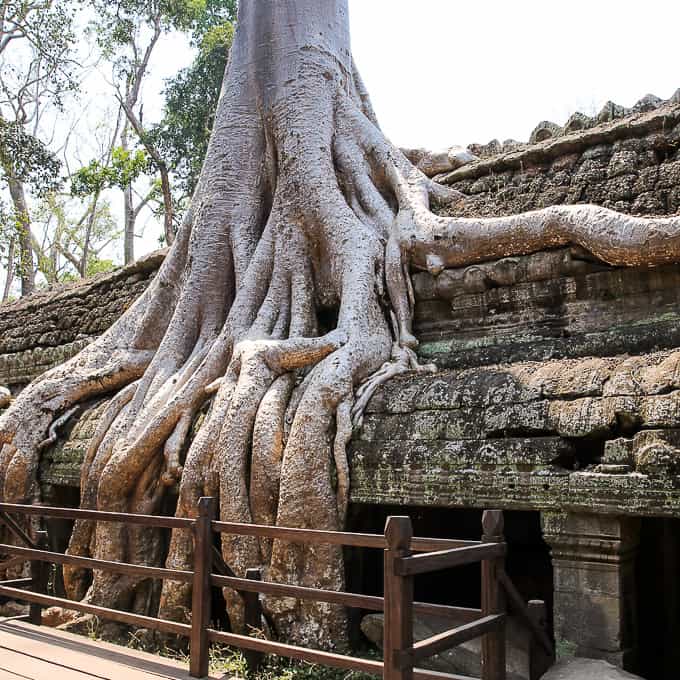
Ta Prohm, Cambodia
Ta Prohm, also known as the Jungle Temple, is an area of temple ruins overgrown with trees, located at Angkor, Cambodia. The temple is pretty much in the same condition as it was initially found: with the roots of the trees growing through the temple structures and the jungle all around.
Ta Prohm was used as one of the filming locations in the Tomb Raider movie.
Ta Prohm was built by the Khmer King Jayavarman VII (a king of the Khmer Empire from 1181 to 1218). It was dedicated as a Mahayana Buddhist monastery.
7. Preah Khan Temple
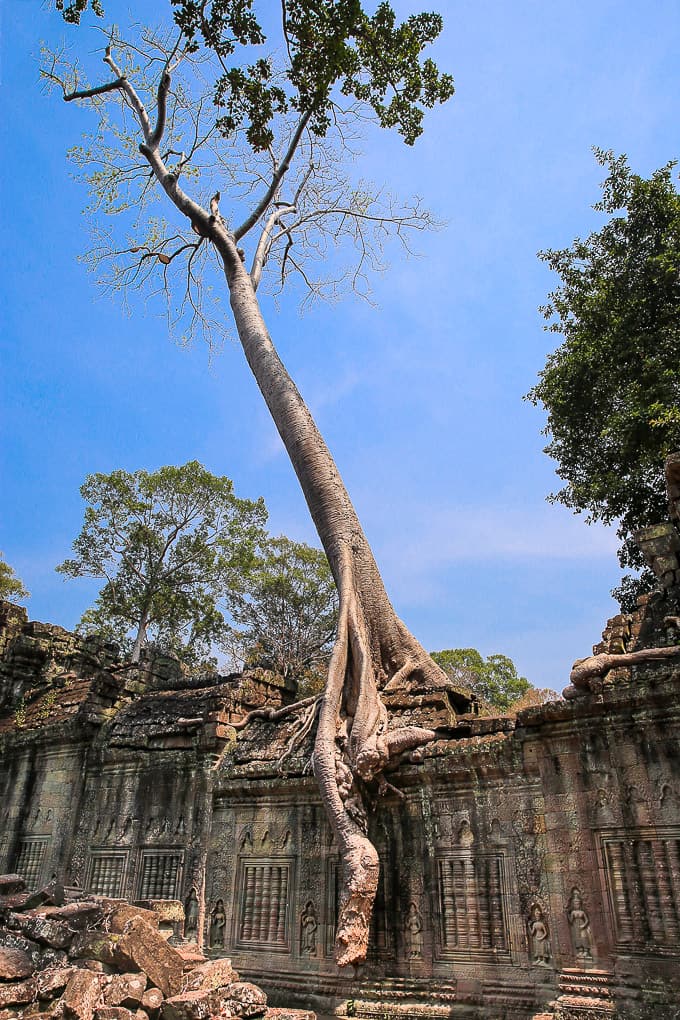
Tree roots at Preah Khan temple complex near Angkor Wat, Cambodia
Preah Khan is a 12th-century temple at Angkor, Cambodia. Preah Khan is famous for its many trees that grow through the temple ruins and the lush vegetation surrounding the temple.
It was built during the reign of King Jayavarman VII (a king of the Khmer Empire from 1181 to 1218). He built this temple in honor of his father.
Preah Khan is located northeast of Angkor Thom and northwest of the Eastern Mebon, Cambodia. Preah Khan is located about 7 or 8 km away from Angkor Wat.
8. East Mebon
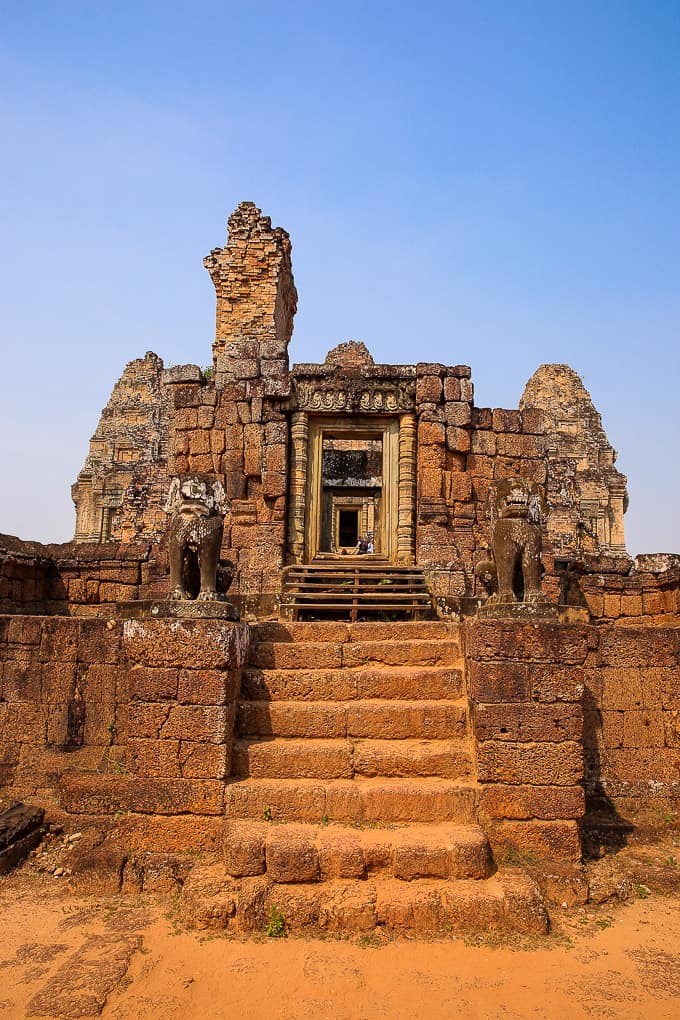
East Mebon, Cambodia
The East Mebon is a temple dedicated to the Hindu god Shiva in Angkor, Cambodia. The temple was built in the 10th century during the reign of King Rajendravarman who was the king of the Khmer Empire from 944 to 968.
9. Neak Pean
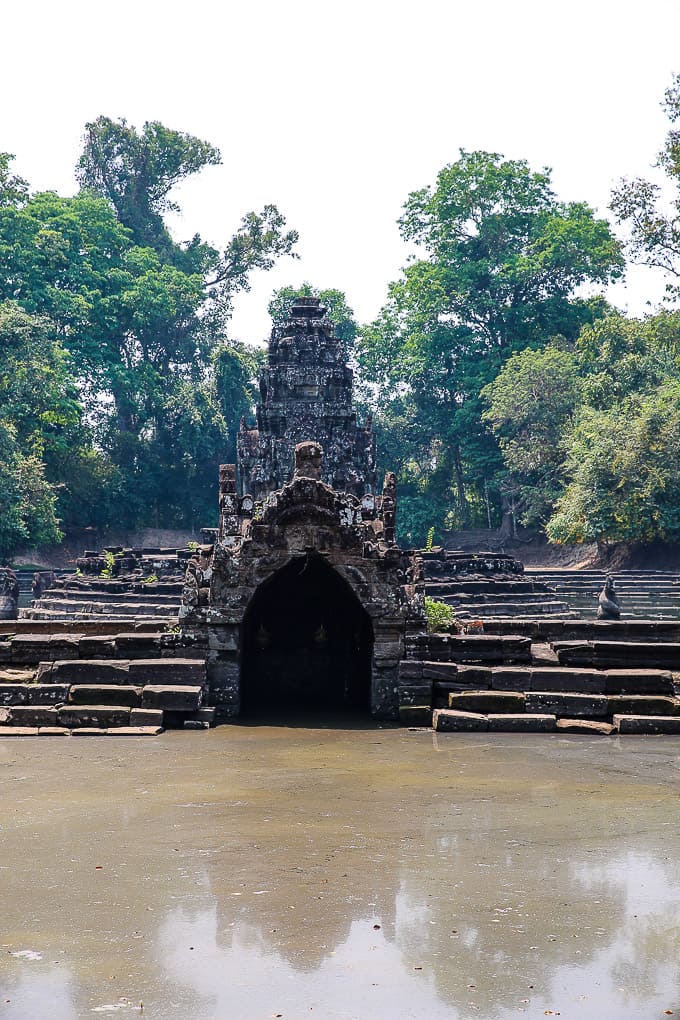
Jayatataka Baray Surrounding Neak Pean Temple next to the Preah Khan Temple
Neak Pean is an artificial island in the Jayatataka Baray near Preah Khan Temple in Angkor, Cambodia. The island has a Buddhist temple surrounded by four connected pools.
Neak Pean was built by King Jayavarman VII (a king of the Khmer Empire from (reigned 1181 to 1218). The construction was completed in the 12th century. It was initially designed as a hospital.
There are four connected pools around the island representing Earth, Water, Fire, and Wind. Originally, there were also statues of the Four Great Animals: Horse, Elephant, Bull, and Lion. The only surviving sculpture is the sculpture of the Horse Balaha (the Flying Horse).
10. Pre Rup
Pre Rup is a Hindu temple built as the state temple of Khmer king Rajendravarman II at Angkor, Cambodia. King Rajendravarman II reigned from 944 to 968.
The use of laterite in brick in the construction of Pre Rup gives the temple an unusual reddish hue that is especially visible early in the morning.
The post 10 Best Temples of Angkor, Cambodia appeared first on Julia's Album.
from Julia's Album https://ift.tt/32VfyuD
via IFTTT
0 comments:
Post a Comment